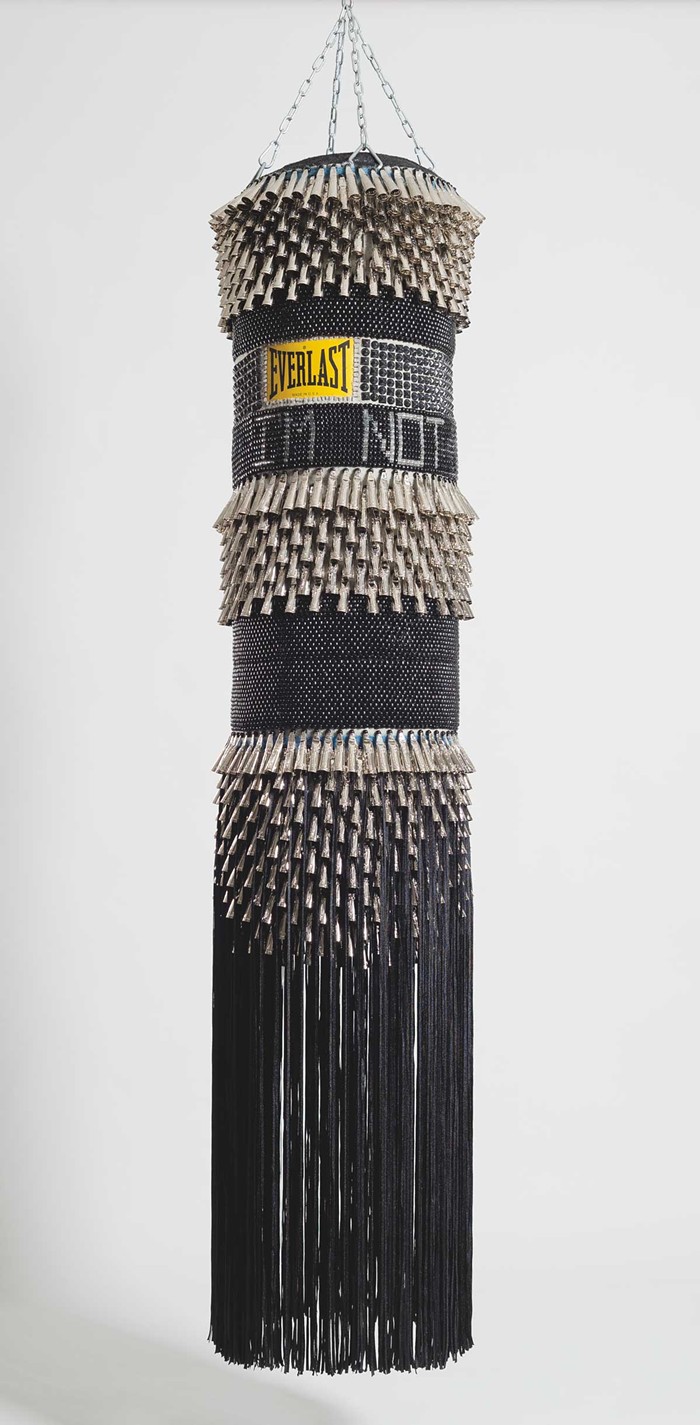This sculpture by Jeffrey Gibson is part of his exhibition Like a Hammer, showing at Seattle Art Museum through May 12. Its materials include a repurposed canvas punching bag, a repurposed wool army blanket, glass beads, tin jingles, and nylon fringe.
Those tin cones, or jingles, are borrowed from jingle dresses. Originally made of rolled tobacco lids and adopted by powwow dancers, these tin cones are now manufactured for that express purpose. Something that was once improvised and handmade is now ceremonialized and mass-produced.
I'M NOT PERFECT is part of Gibson's Everlast series that consists of sculptures made primarily of punching bags—an object that, in our culture, represents aggression, masculinity, anger. In context, it brings up the violence of Western culture on indigenous people in this country.
The black fringe here is nylon, but Gibson also uses leather. "Leather fringe would be used in both men's and women's traditional regalia," notes Barbara Brotherton, SAM's curator of Native American art.
The show's title comes from Pete Seeger and Lee Hays's 1949 song "If I Had a Hammer," popularized by Peter, Paul, and Mary in the 1960s. (Gibson likes pop and disco.) He was also inspired by Friedrich Nietzsche's idea of "philosophizing with a hammer."
The title of this sculpture is a reference to Grace Jones's 1986 romantic anthem "I'm Not Perfect (But I'm Perfect for You)." In the music video, Jones dons a 25-foot-long black-and-white skirt decorated by American artist Keith Haring, which inspired Gibson.
Gibson, a queer sculptor and painter, is a member of the Mississippi Band of Choctaw Indians and is half Cherokee. He grew up in major urban centers around the world from Germany to South Korea, England to Chicago, which had a strong influence on his cultural upbringing. He now lives in New York's Hudson Valley.
Indigenous futurism is a movement that imagines a future by looking to the past, emphasizing indigenous ways of knowing, stories, histories, and cultures. Gibson's futurist vision incorporates his love for dance clubs, music, ancestral spirits, and adornment.














